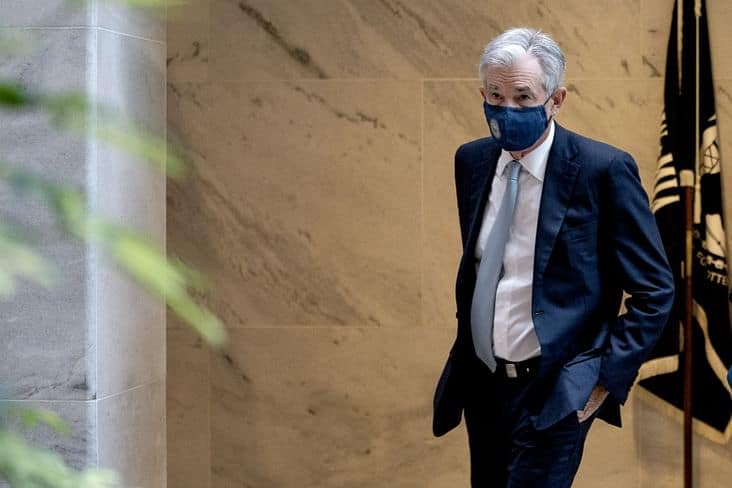Federal Reserve Chairman Jerome Powell’s inflation dashboard is starting to show some signs of overheating.
From spreading price increases to rising wages, it’s signaling more caution on the inflation front than when Powell unveiled the benchmarks less than three months ago.
In a speech to the Fed’s annual Jackson Hole conference, held virtually in late August, Powell sketched out five ways of assessing the outlook for inflation and argued that each of them suggested there was no cause for alarm.
But a report last week showed consumer prices skyrocketed by 6.2% in October from a year earlier, led by cars, food, gasoline, electricity and fuel oil. The personal consumption expenditures price index, the Fed’s favored inflation gauge, rose at a year-on-year rate of 4.4% in September, the most since 1991 and well above the central bank’s 2% target.
Here are how Powell’s five different inflation tests are faring as President Joe Biden considers whether to appoint him to a second four-year term:
1. Are inflation pressures broad-based?
In August, Powell said the spike in inflation up until that point was largely the result of price rises in a narrow group of goods and services directly affected by the pandemic. That’s no longer the case.
“It has become relatively broad-based” in the last couple of months, said Joe Minarik, director of research for the Committee for Economic Development.
2. Are price rises moderating in those goods and services that have experienced the biggest run-ups?
While there were some signs that was happening a few months ago, it’s no longer so clear-cut. Yes, used-car price inflation has come down a lot from its 45.2% high in June, though it is still running in excess of 25%.
Annual price rises for durable goods in general though clocked in at 7.3% in September, the biggest increase since 1981. That’s been fueled by supply-chain snafus that seem unlikely to go away anytime soon and strong demand from consumers flush with cash from successive fiscal packages.
3. What is happening to wages?
Powell told the Jackson Hole conference that he saw little evidence of wage increases that might threaten excessive inflation. Worker pay has picked up since then, as employees have taken advantage of plentiful job openings to quit in record numbers in search of better opportunities.
“We believe the U.S. is entering the tightest labor-market conditions since the 1950s,” Aneta Markowska, chief financial economist at Jefferies Group LLC, wrote in a note this week. As a result, wage pressures are unlikely to ease next year, keeping inflation elevated.
4. What is happening to longer-term inflation expectations?
Fed policy makers pay a lot of attention to what Americans are thinking about prices because officials believe that goes a long way to determining where inflation ends up.
If workers and companies are fearful of prices spiraling upward, they’ll act in ways that will help bring that about. Employees will press for outsized wage gains, while companies will be quick to jack up prices to cover their rising costs, and then some.
Inflation expectations among consumers and investors have risen to their highest levels in years as price rises have accelerated, especially for gasoline and other energy products. But so far at least that isn’t setting off alarm bells at the Fed.
5. Are longer-term global forces still pushing down inflation?
Over the past quarter century, inflation has generally been low in the U.S. and across much of the industrial world. Powell has ascribed that to a variety of structural factors, including technological advances and globalization, and argued they would continue to act as a check on inflation even after the pandemic is over.
There are signs though that some of those forces may be becoming less powerful, at least for now. Import prices, perhaps the best measure of inflationary impulses from abroad, have risen sharply recently.
“Powell’s Jackson Hole speech in August provided a clear, comprehensive and authoritative statement, enumerated in five pillars, of the widespread team ‘transitory’ view of inflation that prevailed at that time,” former Treasury Secretary and paid Bloomberg contributor Lawrence Summers said in a Nov. 15 tweet. “Today, all five pillars are wobbly at best.”

